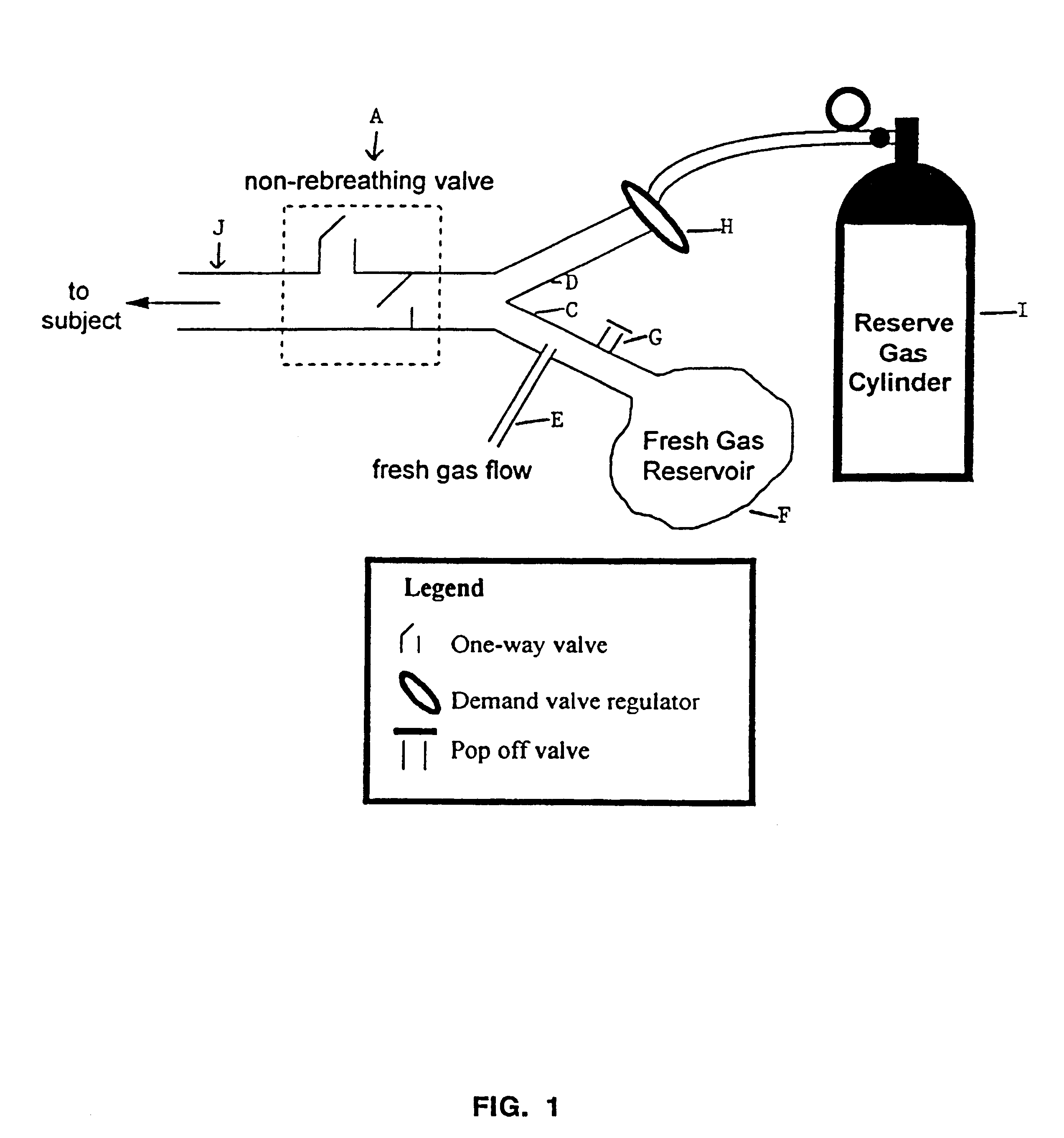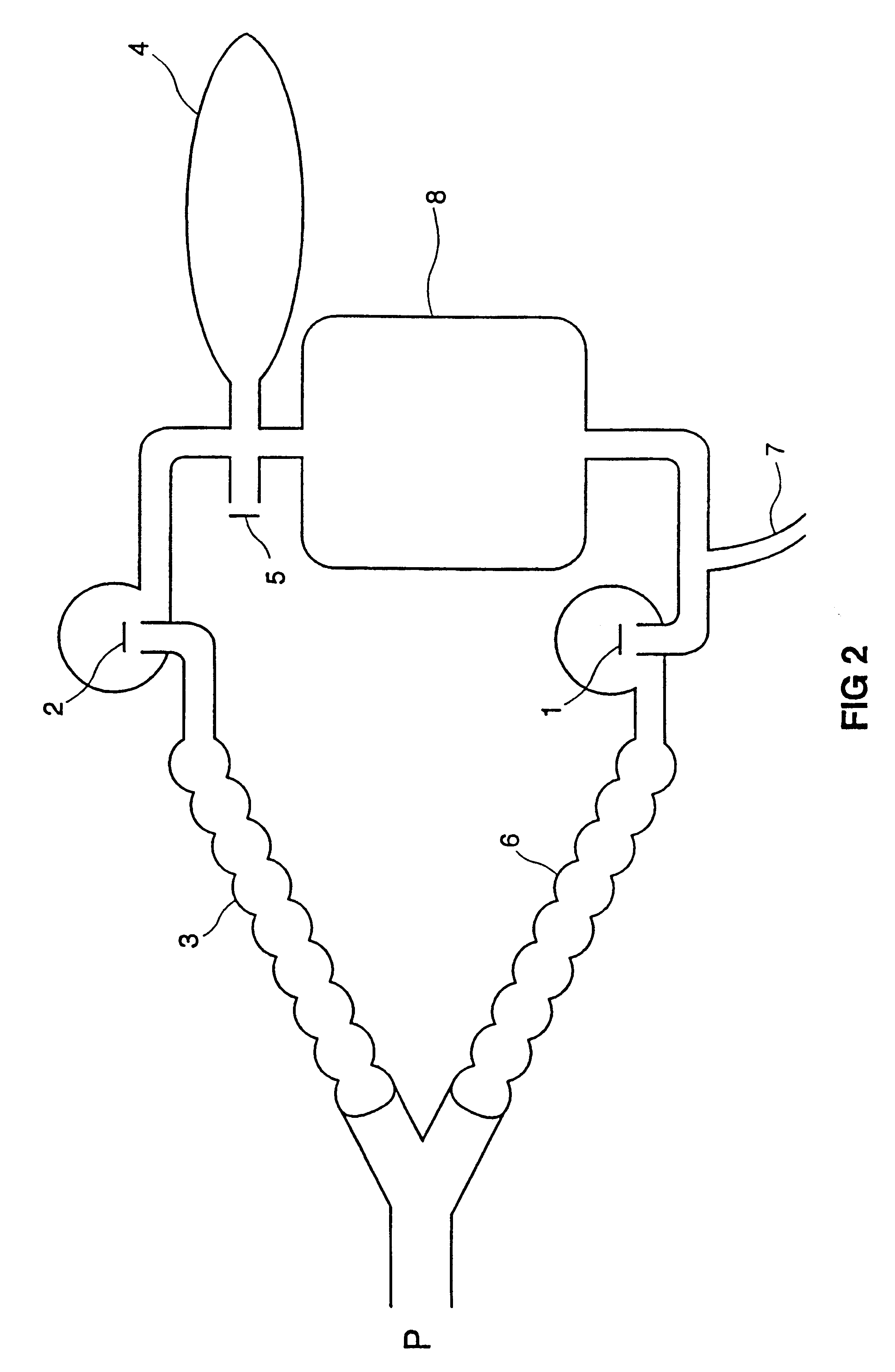Elimination of vapour anaesthetics from patients after surgical procedures
a vapour anaesthetic and surgical procedure technology, applied in the field of vapour anaesthetics, to achieve the effect of preventing any perturbation of the arterial pco.sub.2 and facilitating recovery
- Summary
- Abstract
- Description
- Claims
- Application Information
AI Technical Summary
Benefits of technology
Problems solved by technology
Method used
Image
Examples
Embodiment Construction
The circuit (FIG. 1) consists of a non-rebreathing valve (A) connected distally to two ports (C and D). The first port is connected in parallel to a source of fresh gas (E) (which does not contain CO.sub.2) and a fresh gas reservoir (F). A one-way pressure relief valve (G) prevents overfilling of the reservoir (F) by venting excess fresh gas. The second port (D) is connected via a one-way valve (H), to a source of gas (containing CO.sub.2) whose PCO.sub.2 is equal approximately to that of the mixed venous PCO.sub.2
We call this the "reserve gas" (I). Non-rebreathing valve A is connected to exit port J (from which the patient breathes).
Functional Analysis of Circuit Maintaining Constant PCO.sub.2 with Hyperventilation
When the minute ventilation "V" is less than or equal to the fresh gas flow "FGF" from (E), the subject inhales only fresh gas (non-CO.sub.2 -containing gas). When V exceeds FGF, the reservoir (F) containing fresh non-CO.sub.2 -containing gas empties first and the balance...
PUM
 Login to View More
Login to View More Abstract
Description
Claims
Application Information
 Login to View More
Login to View More - R&D
- Intellectual Property
- Life Sciences
- Materials
- Tech Scout
- Unparalleled Data Quality
- Higher Quality Content
- 60% Fewer Hallucinations
Browse by: Latest US Patents, China's latest patents, Technical Efficacy Thesaurus, Application Domain, Technology Topic, Popular Technical Reports.
© 2025 PatSnap. All rights reserved.Legal|Privacy policy|Modern Slavery Act Transparency Statement|Sitemap|About US| Contact US: help@patsnap.com



